Chapter
6: Impact

Immigration
On September 14,
1881 the first train crossed the new bridge over the Assiniboine.
Nineteen days later the newly created site called Brandon saw its first
train. The creation of a new city, destined to be the service centre
for a huge expanse of farmland, proceeded… quickly.
By mid 1882 three
thousand people lived here, 200 businesses were established, and
thousands were passing through on their way to new homes on the vast
prairie.
In 1887 the
original CPR Station was replaced by an attractive new building,
reminiscent of an English Country Inn.
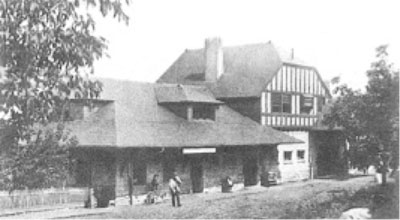
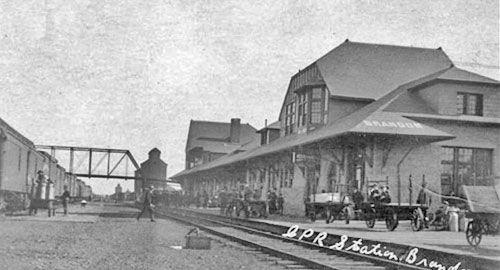
Two
views of the
second CPR Station
That building in
turn was replaced in 1911 by a large modern structure, destined to
become a highly visible landmark at the base of Brandon’s busy 10th
Street.
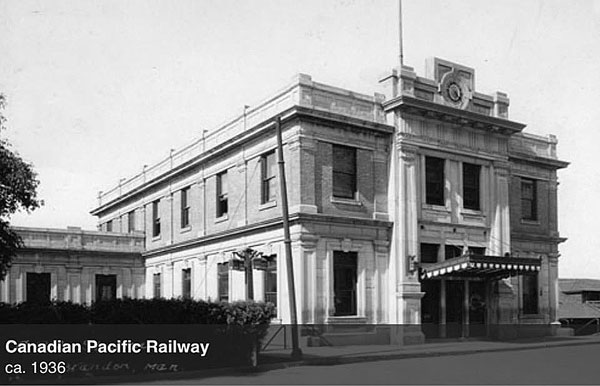 A
David Munn
photo of the “New Station.
A
David Munn
photo of the “New Station.
By 1907 the CPR
had 600 people on the Brandon and area payroll. And by then it was just
one of three major railway companies connecting Brandon to the world.
Some historians
have estimated that by 1912 about 300 passenger trains and 500 freight
trains passed through Brandon each week. Compare that to today when
18-24 trains pass over the same tracks.
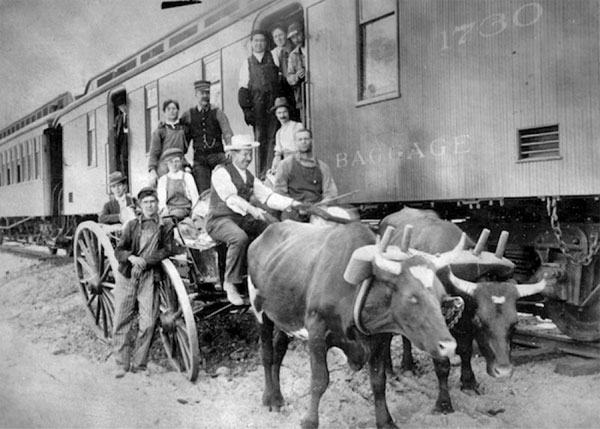
Alternate
modes
of transportation - Archives of Manitoba
Throughout
western Manitoba there are countless pioneers stories that begin
something like this:
“Moses Calverley
left Hagersville, Ontario, and came by train to Brandon, then set out
on foot to search for his own virgin land.“
“Mrs. Morrison
and her baby son came west, traveling to Brandon to the end of the
steel, then by team and wagon to Hartney, …”
“Upon their
arrival in Brandon, they (the Thomas Reid family) pitched tents on
Rosser Avenue where the women and children remained while the men went
on to prepare shelter and find homesteads.”
“During this
time, I (John More) used to get off for a few days in the summer to
look for land, but did not succeed until 1885, when I took the train to
Brandon and walked to Deloraine.”
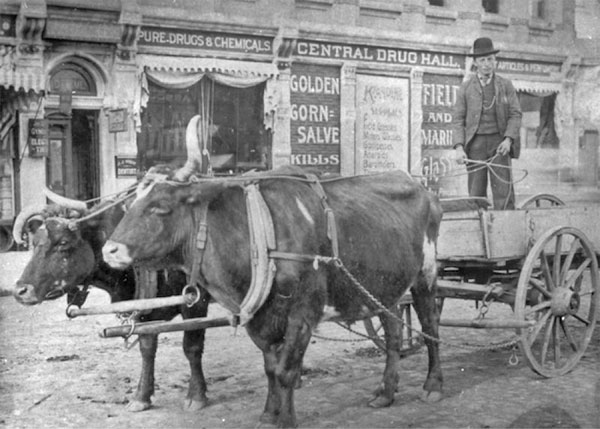
The
train brought
may settlers to Brandon but transportation to their homestead often
required more traditional methods. Archives of Manitoba
Freight and
Mail
In addition to
moving people, the new rail line was a giant leap forward in terms of
freight when compared to the ox cart and the steamboat. This enabled
the explosion of building that created this new city and the dozens of
smaller towns springing up in the region.
Regular trips to
Brandon for supplies were a way of life for pioneers in Westman.
The railway was
such an improvement in transporting goods that the T. Eaton Company,
and a few others, sold houses (and barns, and churches, and school
houses!) from their catalogue.
The house portion
of Eaton's merchandise was a Western Canadian phenomenon only. Houses
were advertised only in the Winnipeg catalogue and in special plan
books.
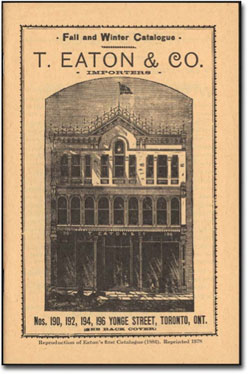
The lumber came
by boxcar from British Columbia and the millwork came from Winnipeg.
Freight was paid to the nearest railway station.
Step by step
instructions were included.
The Wheat City
The same trains
that brought the tons of lumber and farm implements went back east
loaded with grain. For nearly ten years, while the region’s farmers
waited for branch lines, most of that grain travelled through Brandon.
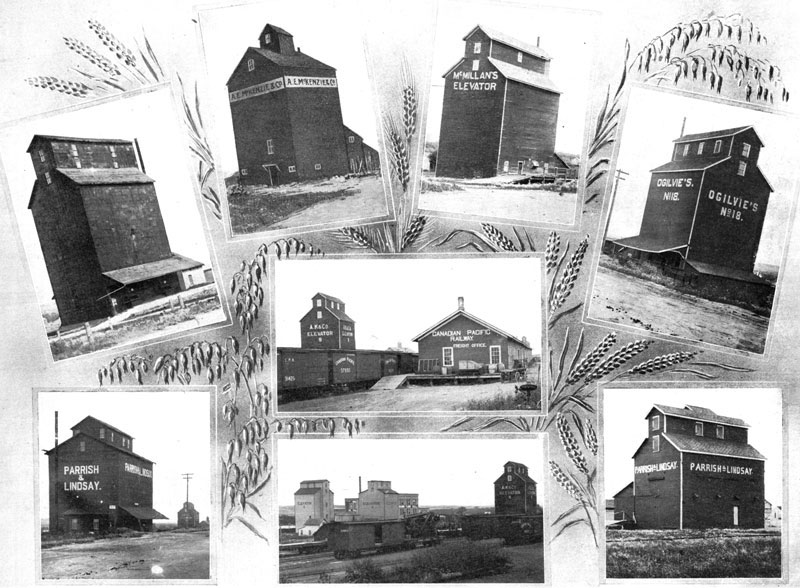 At its
peak in
the late 1930s, there were about 19 such grain elevators lining Pacific
Avenue, "a solid wall of grain elevators from First to 18th." A Brandon
Souvenir
At its
peak in
the late 1930s, there were about 19 such grain elevators lining Pacific
Avenue, "a solid wall of grain elevators from First to 18th." A Brandon
Souvenir
Pioneer
farmers
had these memories…
“Early farming
was difficult and laborious. Seed was scattered by hand and harrowed in
with Couver harrows. Grain was hauled, first to Brandon, then to
Deloraine before the railway finally arrived at Hartney.”
George Morrison
“The first grain
was hauled to Brandon for sale. Prices were very low and it seemed the
further you were from the railway, the less money you had to take home
after paying for stopping houses and food.” Mrs. Elizabeth
Weightman
“For the first
few years the grain had to be hauled to Brandon to be traded, in part,
for flour, tea, sugar and other commodities. No doubt, lumber was
brought on the return trip to build the first school in the
area.” Nathaniel Barber:
Delivered to Your
Door…
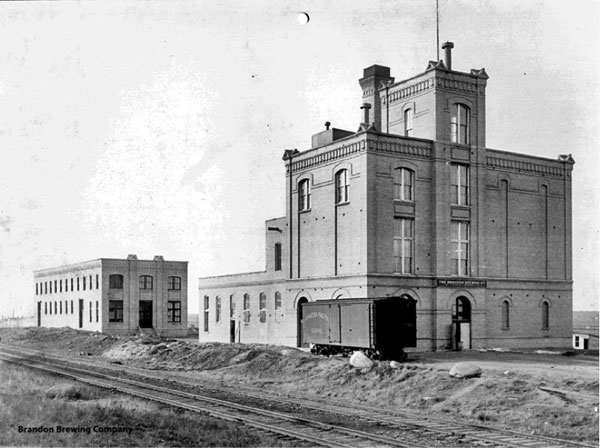
Brandon
Brewing
Company - Archives of Manitoba
Short spur lines
like the one in to the Brandon Brewing Company provided excellent
service to businesses.
And travellers on
the Canadian Northern found the station adjacent to Brandon’s finest
hotel…. and close to many others.
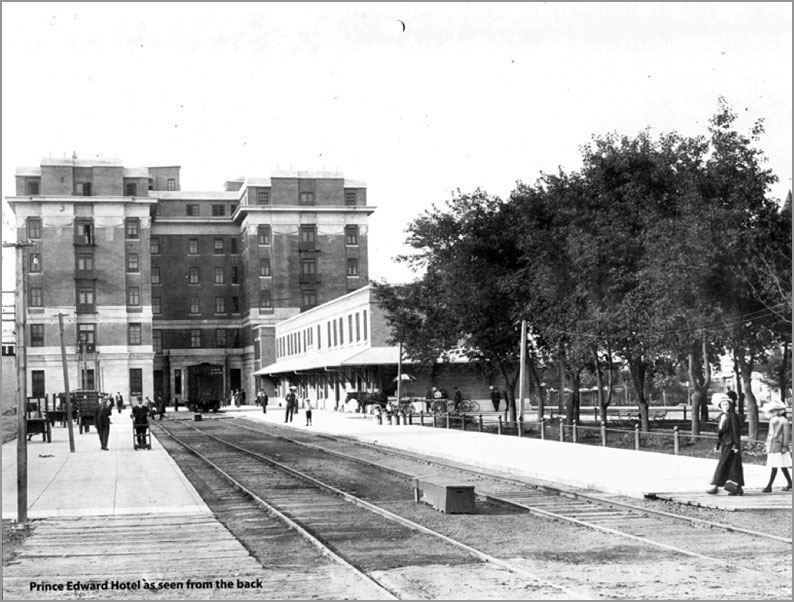
Convenient
access
to the Prince eddy. Photo BATM
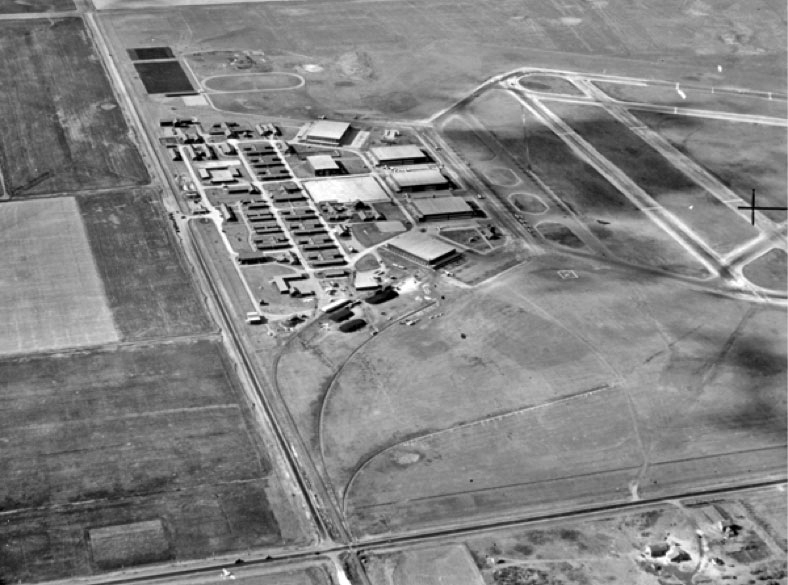
When
military
training centres such as Camp Hughes and The Air Training Centre opened
nearby – a direct link was required.
Silk Trains
As the economy
developed, the trains carried a wider assortment of goods into the new
city, stocking the stores with consumer items from around the world.
Trains proved especially valuable where time of delivery was crucial.
The speed of
travel on the rail was soon put to commercial benefit with the Silk
Trains. Special airtight freight cars were "fast tracked" to Fort
William, now Thunder Bay, or beyond, as far a s New York.
The value of the
cargo was so great that the only passengers were guards.
"The Silk" used
to make a five-minute stop in Brandon on its runs during two decades of
service early in the century. During this stop the locomotive would be
changed and a quick check made of the running gear.
Nothing
interrupted The Silk's schedule. Even a special train bearing Prince
George (later King George VI) eastward in December, 1924 had to be
pulled onto a side track to allow The Silk to pass.
Speed was
essential because the railways paid a high daily insurance while the
cargo was being transported. Even during the Twenties a cargo of silk
leaving Yokohama on the Empress of Canada arrived in New York City
thirteen days later. A record trip was made between Brandon and
Winnipeg in 1924 - 133 miles in 131 minutes.
The Silk service
was discontinued in the mid-thirties when there was no longer a demand
for silk. A former Silk fireman, Alex Stelmack, once resided in
Brandon.
Special Duty
There were also
times when the railways were called upon, and able, to provide some
unlikely services.
In the days
before home refrigerators, ice was a valued commodity. A large
icehouse, located between the CPR tracks and Assiniboine Avenue at 3rd
Street, was filled with blocks of ice from the Assiniboine River each
winter and later shipped via refrigerator cars.
When the icehouse
caught fire, steam switch engines were used as fire engines. A hose
carried in a box under the tender was fitted into a branch of the
boiler feed pipe (discharge pipe). When the injector was turned on it
gave a nozzle pressure of over 200 psi.
Another service
was provided when an explosion at the 10th Street steam plant left
Brandon without heat. CN stepped up to the call and set locomotives on
a siding and ran pipe to provide Brandon with much needed steam
power/heat for the duration of the outage.
|


